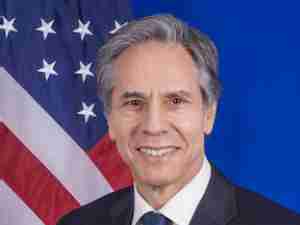Congress should enact transportation legislation that would comprise user-supported surface networks and focus on integrating all modes into one system, according to Joseph Giglio, vice-chairman of the Hudson Institute, a Washington-based think tank.
Drastic measures are needed, including revolutionary changes in financing, technology and management, to improve a rapidly-deteriorating surface transportation system in the United States, Giglio told a recent conference in Ottawa, Canada's capital, staged by the Chartered Institute of Logistics & Transport (CILT).
Participants in the conference assessed the impact of changing patterns of global and North American trade.
"When you don't have sufficient transportation capacity, it acts as a major constraint on economic growth," said Giglio, who, among other tasks, has served as a special advisor to the Office of the US Secretary of Transportation.
In the period to 2025, the gap between the cumulative highway and transit needs and revenues from such sources as the Highway Trust Fund has been estimated at nearly $2 trillion, Giglio said. "We are not going to fill the gap with debt-financing."
"The solution," in his view, "is to end the practice of regarding access to highways as free."
Motorists should be charged tolls based on the miles they travel and the kind of vehicles they drive, Giglio said, adding that new technology allows for hassle-free toll collection. Until the highway system becomes completely user-supported, funds needed to greatly improve surface transportation would be generated by an interim increase in the federal motor-vehicle fuel tax.
Key policy recommendations of the Hudson Institute, Mr. Giglio declared, include "establishing a national strategic freight investment program" and recognizing all transportation modes as "critical, inter-related components" contributing to the US role in the global economy.
Representatives from the North American railway industry agreed that the demands of surging trade with Asia, China in particular, could not be met by enhanced road construction alone to halt congestion.
"We need to look at multi-modal alternatives," said Bruce Burrows, acting president of the Railway Association of Canada.
In meeting current challenges, Burrows also reiterated the concern of Canadian railway interests that they continue to face a 50% bigger tax burden than their US counterparts.
Robert C. VanderClute, senior vice-president, safety and operations of the Association of American Railroads, said better use had to be made of existing assets and new technology to increase the mechanical reliability of rolling stock. At the same time, he regarded public/private partnerships as an essential tool for the development of major transportation projects.
Marie Houde, director of network strategies for CN, dwelt at length on the benefits of what she called precision railroading built off the traditional concept of scheduled railroads.
"Capacity," she said, "is a team sport - where railways, ports, terminals, truckers and shippers should be working together."
Regarding the future of marine transportation, Normand Fillion, vice-president, marketing and development for the Montreal Port Authority, said industry growth hinged on several key factors. These included the recognition by communities of the important role of port infrastructures for economic development and the provision of efficient rail and road systems to handle traffic growth.










